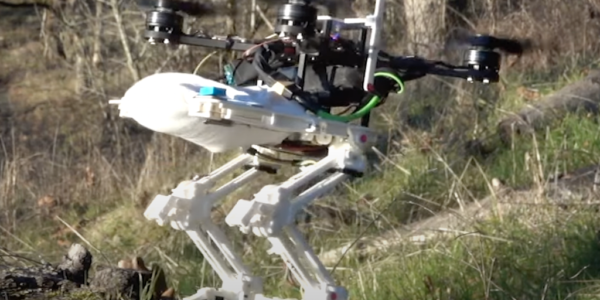Good ideas for robots often come from nature. So if we think of a drone as something like a bird, it’s natural to think of adding talons to the basic design.
This is what researchers at Stanford have done with the Stereotyped Nature-Inspired Aerial Grasper, or SNAG. Basing their design on the peregrine falcon, they gave a standard quadcopter robotic legs and claws.
When the drone comes in for a landing, the force of contact with the landing site causes the claws to grab the surface. An algorithm balances the SNAG so that doesn’t tip over, and the claws lock in place.
This allows the drone to land successfully and perch on a branch or other surface. Landing is often a challenge for drones, so this is a game changer.
Possible predator
A falcon is a predator, and the SNAG can also be one. Its makers can use the landing claws to catch things thrown at the drone, or to grab things by swooping down on them.
The makers see their creation helping to learn more about birds, putting out wildfires, and assisting in search and rescue operations. They haven’t talked about weaponizing the SNAG.
All the drone’s movements are remote controlled. It has no autonomous movement at this point, and no programmed actions, either.
But it’s a start.
Factory helper?
We don’t see industrial applications for the SNAG at present. Since we specialize in Indramat motion control, our interest in the SNAG is purely abstract. However, we will watch its future progress with interest.
In the meantime, if you need service or support for Indramat drive and control units, we are the people you should contact. Call (479) 422-0390 for immediate assistance.
